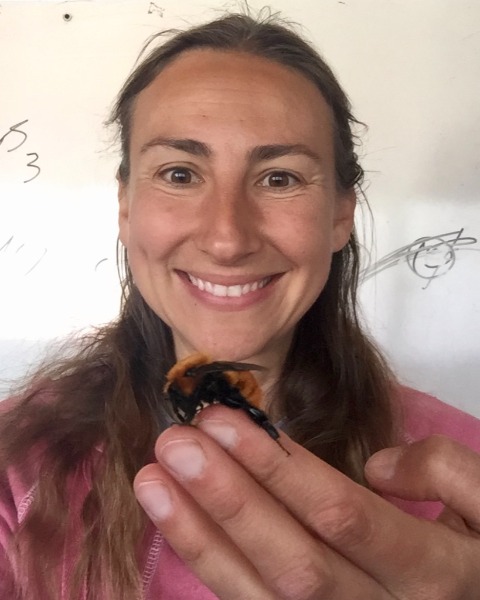P-IE
Section Symposium
Insect Pests and Beneficial Arthropods in Climate-Change-Resilient Diversified Cropping Systems
6: Can the addition of native perennial vegetation provide resilience to climate change: Insights from the STRIPS project
Thursday, November 19, 2020
2:20 PM - 2:35 PM EST

Ge Zhang
New Mexico State University
Albuquerque, New Mexico
Amy Toth
Iowa State University
Ames, Iowa- LS
Lisa Schulte-Moore
Iowa State University
Ames, Iowa 
Matthew E. O'Neal
Iowa State University
Ames, Iowa
Presenting Author(s)
Co-Author(s)
There is concern that a changing climate will exacerbate forage dearth, a factor contributing to the failure of honey bee colonies. How climate change affects pollen availability, the source of protein, lipids, and micro-nutrition for honey bees, has yet to be investigated. Through a multiyear study exploring factors that influence the abundance and diversity of pollen collected by honey bees in central Iowa, USA, we investigated if extreme weather events (i.e., high temperature and drought) affect pollen collection. The amount of collected pollen was reduced during years when high temperatures occurred concurrently with a drought (i.e. July). When the temperature cooled but drought persisted (i.e. August), honey bees collected pollen from a native, drought-resistant plant Chamaecrista fasciculata avoiding a forage dearth. Chamaecrista fasciculata is a common plant in remnant, restored and reconstructed prairies. We explored if this and other native plants are used by non-native honey bees through the STRIPS (Science-based Trails of Rowcrops Integrated with Prairie Strips) project. This conservation practice adds small patch (<10 acres) of prairie into commercial farms. By comparing colonies to those kept at farms without prairie strips, we evaluated if this practice improves pollen collection and colony health. Colonies in prairie strips collected pollen from a diverse floral community including several drought resistant native plants. Honey production, bee populations and overwintering survival was greater at farms with prairie strips. These studies suggest the addition of native perennial vegetation could improve honey bee health and provide resilience to climate change.

